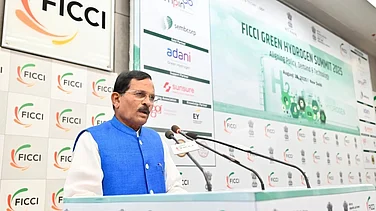India's gig economy is reshaping the employment landscape, offering flexible and independent work opportunities across sectors like ride-hailing, food delivery and e-commerce logistics. However, women remain largely excluded from this transformation, accounting for only 10-15% of the gig workforce. This stark gender gap stems from deep-rooted socioeconomic barriers, including restricted mobility, safety concerns, lack of access to financial resources and limited vehicle ownership. As the country pushes for inclusive growth, electric two-wheelers (E-2Ws) offer a powerful tool to create new avenues for women's participation.
The rise of electric two-wheelers is timely. With lower upfront costs, reduced running expenses and simpler maintenance requirements, they provide a financially viable alternative to conventional petrol vehicles. Yet, the adoption of E-2Ws among women remains low, partly due to the lack of awareness and targeted policy interventions. The promise of electric mobility extends far beyond emissions reduction—it can act as an equaliser, granting women greater control over their livelihoods. Closing this gap is not just about gender justice—it’s a strategic move toward a more inclusive and thriving economy.
Despite the gig economy’s rapid growth, several obstacles prevent women from accessing the opportunities. The high initial cost of vehicle ownership being the most significant one. A majority of women lack collateral or access to affordable credit, making it difficult to finance vehicle purchases. Safety concerns also play a critical role. Gig jobs often require working late hours or traversing unfamiliar areas—risks that disproportionately impact women.
The Financial Angle
E-2Ws have the potential to unlock gig work opportunities for women by addressing the key barriers to entry. Their lower operating costs—driven by minimal fuel expenses and reduced maintenance—make them more financially viable than traditional petrol two-wheelers. Over a typical five-year life cycle, the total cost of ownership (TCO) for an E-2W is 30-40% lower than that of a petrol two-wheeler, primarily due to fuel savings and fewer mechanical failures. For outright purchases, an E-2W has a higher upfront cost—ranging from Rs 1-1.5 lakh (including the battery) compared to Rs 80,000-1.2 lakh for petrol two-wheelers. However, the long-term savings on fuel (Rs 0.20/km vs Rs 2/km) and maintenance (Rs 3,000-5,000 annually vs Rs 8,000-12,000) more than offset the initial investment.
Leasing and pay-as-you-go models further lower the entry threshold, allowing women to access vehicles without long-term financial commitments. Under a leasing model, an E-2W can be rented for Rs 3,000-4,500 per month, which remains competitive with fuel and maintenance costs of petrol alternatives while reducing upfront financial stress.
But gender-sensitive financing options remain scarce. Initiatives like PM E-Drive and various state-level subsidies provide critical support, but they often fail to prioritise women borrowers. Bridging the financing gap through targeted loan schemes, micro-credit facilities and low-collateral lending could significantly boost women's participation in the EV-driven gig economy, ensuring more inclusive access to sustainable employment opportunities.
The rise of micro-mobility services offers another entry point for women. Small, lightweight E-2Ws like those offered by Yulu and Rapido are ideal for last-mile delivery and ride-hailing services, offering both affordability and convenience. The leasing model further reduces the burden of ownership, allowing women to participate in the gig economy without upfront capital.
Yet, for these interventions to be truly transformative, they must be accompanied by widespread awareness campaigns, skill development programmes and safety assurance measures.
But What About Jobs?
Beyond mobility, the growth of the EV ecosystem itself presents new employment pathways. Women could be trained to operate and manage EV charging stations or take on roles in battery management and maintenance services—critical components of the emerging clean mobility landscape. Investing in gender-responsive skill development will not only increase women's participation but also build a more inclusive green economy.
However, addressing the gender gap in the gig economy requires more than technological solutions. A supportive ecosystem must be built—one that combines financial inclusion, robust safety frameworks, and capacity-building efforts.
Companies and platforms must adopt gender-sensitive work policies, including women-only networks, emergency response systems, and flexible work models. Governments must also step in to design targeted incentives for women gig workers and provide capital support through public-private partnerships.
The EV transition is not just about reducing emissions—it is about reshaping economic opportunities and creating equitable futures. For India’s gig economy to become truly inclusive, the adoption of electric two-wheelers must be intentionally linked to women's empowerment. Scaling up gender-responsive policies, financing mechanisms, and capacity-building initiatives will enable thousands of women to enter the workforce, challenge stereotypes, and stake their claim in the country's mobility revolution.
As India accelerates its clean energy transition, the intersection of E-2Ws and gig economy represents a powerful opportunity to drive both environmental and social progress. The success of this transition will not be measured solely by the number of EVs on the road but by how many women are behind the wheel.
The author is principal research associate, Alliance for an Energy Efficient Economy (AEEE)

























